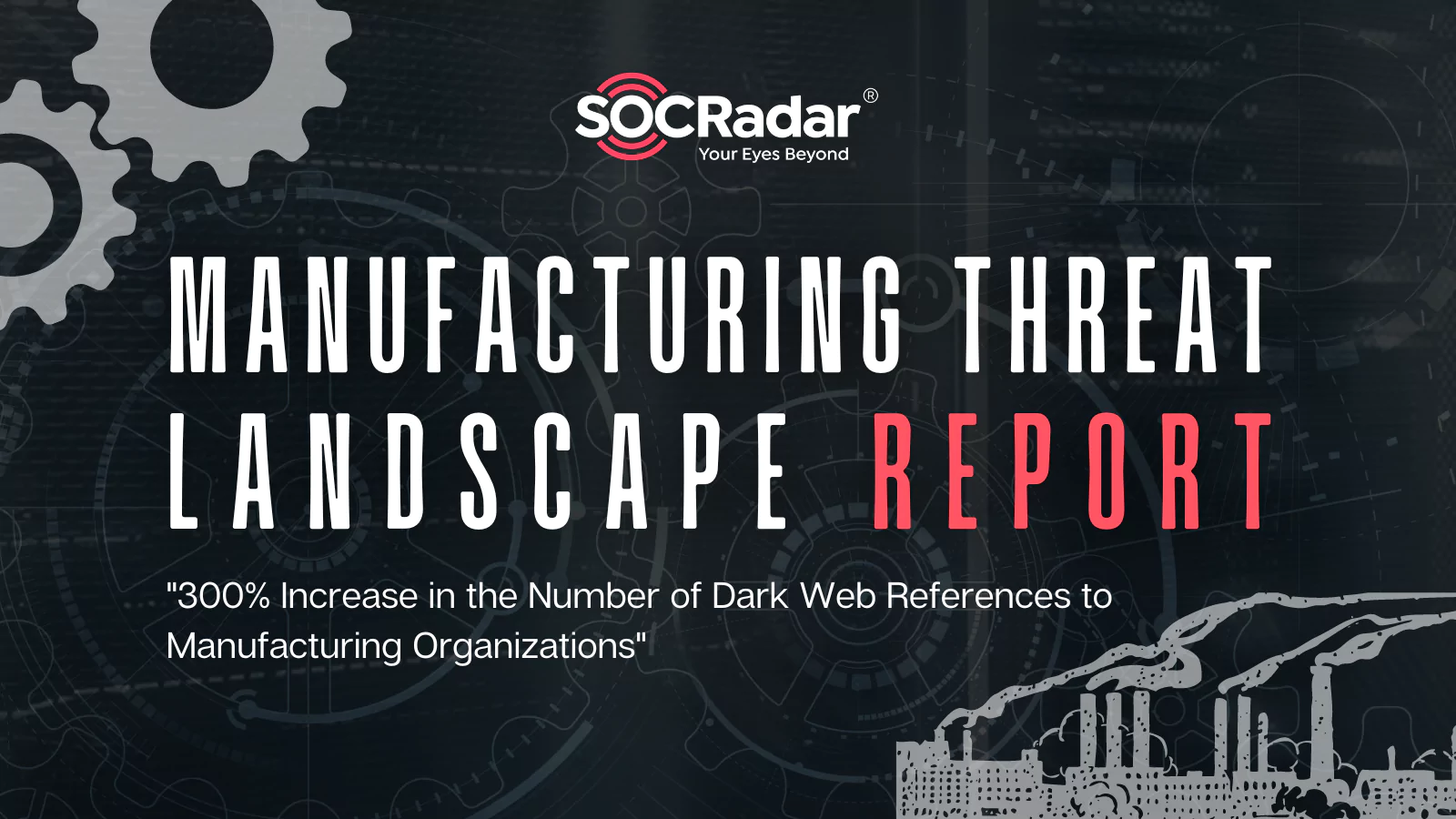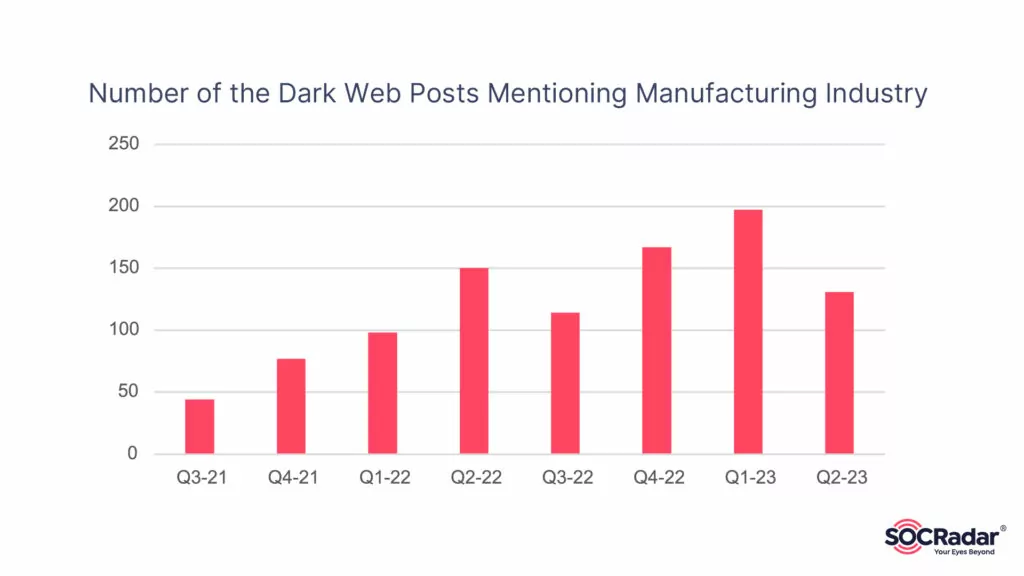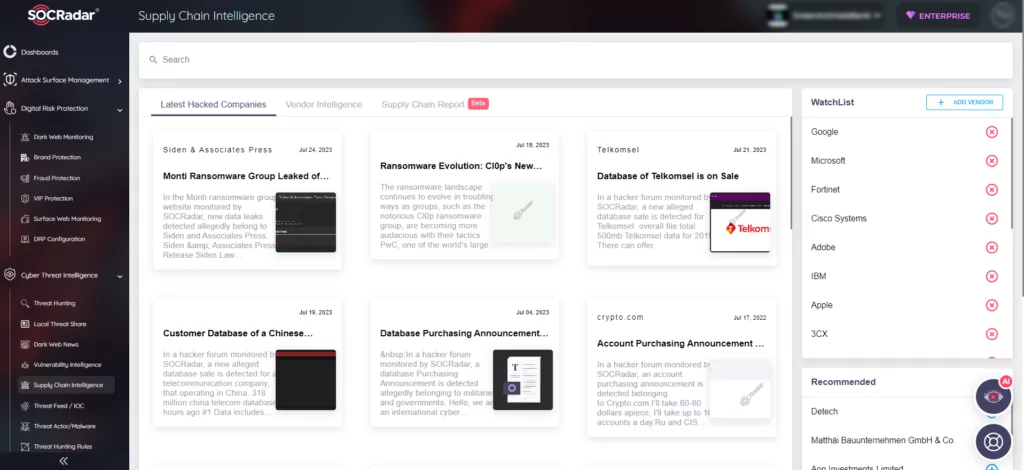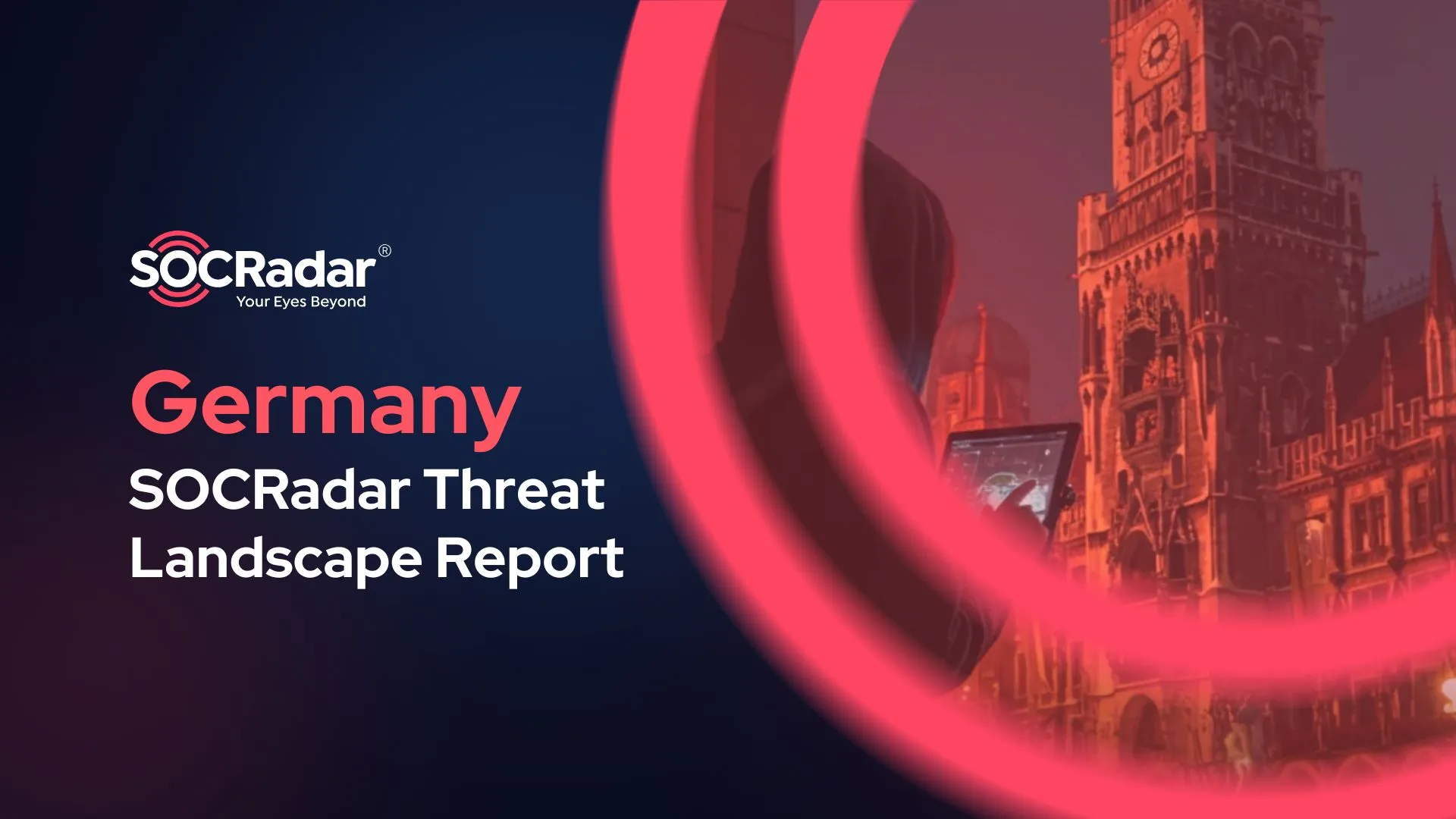
300% Increase in the Number of Dark Web References to Manufacturing Organizations
SOCRadar’s Manufacturing Threat Landscape Report is out now! This report provides valuable insights into the cybersecurity threats the manufacturing industry faces and offers recommendations to strengthen your organization’s security.
Do you want to learn about:
- What are some of the multifaceted threats that the manufacturing sector faces?
- How can CISOs improve their organization’s cybersecurity posture?
- What are some recent trends and threats on the dark web related to the manufacturing industry?
The manufacturing industry is a vital component of the global economy, responsible for producing goods and services that are essential to our daily lives. However, this sector is also a prime target for cybercriminals, who seek to exploit vulnerabilities in the industry’s digital infrastructure to steal sensitive data, disrupt operations, and cause financial harm.
SOCRadar’s Manufacturing Threat Landscape Report provides a comprehensive overview of the manufacturing sector’s multifaceted threats and recommendations for CISOs to improve their organization’s cybersecurity posture. In this blog post, we’ll explore the first two subtitles of the report: “The State of Cybersecurity in Manufacturing” and “The Evolving Threat Landscape.”

The State of Cybersecurity in Manufacturing
The manufacturing industry has long been a target for cybercriminals, who seek to exploit the sector’s reliance on digital technologies to steal sensitive data, disrupt operations, and cause financial harm. In recent years, the frequency and severity of cyberattacks on the manufacturing industry have increased, with attackers using a variety of tactics to achieve their goals.
One of the primary challenges facing the manufacturing industry is the sheer complexity of its digital infrastructure. Modern manufacturing facilities are highly automated, with a wide range of interconnected systems and devices vulnerable to cyberattacks. These systems include everything from industrial control systems (ICS) and supervisory control and data acquisition (SCADA) systems to enterprise resource planning (ERP) software and customer relationship management (CRM) systems.
Another challenge facing the manufacturing industry is the increasing sophistication of cyberattacks. Attackers use advanced techniques such as social engineering, spear-phishing, and ransomware to access manufacturing systems and steal sensitive data. In addition, attackers are increasingly targeting the supply chain, seeking to exploit vulnerabilities in third-party vendors and suppliers to gain access to manufacturing systems.
The Evolving Threat Landscape in the Manufacturing Industry
The manufacturing industry’s threat landscape is constantly evolving, with attackers using new tactics and techniques to achieve their goals. One of the most significant trends in recent years has been the rise of attacks on the dark web. The dark web is a hidden part of the internet that is not accessible through traditional search engines, and it is a haven for cybercriminals who seek to buy and sell stolen data, malware, and other illicit goods and services.
According to SOCRadar’s Manufacturing Threat Landscape Report, there has been a significant increase in the number of dark web posts related to the manufacturing industry in recent years. From July 2021 to June 2022, there was a 300% increase in the number of dark web references to manufacturing organizations. This increase indicates that cybercriminals are increasingly targeting the manufacturing industry and that organizations in this sector must be vigilant in their cybersecurity efforts.

Another trend in the evolving threat landscape is the increasing number of insider threats. Insiders, including employees, contractors, and partners, can pose a significant risk to manufacturing organizations, as they have access to sensitive data and systems. Insiders can use their knowledge and credentials to access sensitive data, plant logic bombs, and perform other malicious activities without detection.
The shift to remote work and the use of personal devices have created new opportunities for unintended internal breaches. Companies that were unprepared for the security challenges, especially during the pandemic, lacked the necessary infrastructure to maintain consistent security measures for all employees. This blurred the lines between personal and work environments, enabling hackers to exploit home networks and devices with limited security.
In the face of these multifaceted threats, manufacturers must adopt an equally comprehensive approach to cybersecurity. This means prioritizing not only IT systems but also the security of OT and ICS. Understanding these threats is the first step towards implementing effective countermeasures and ensuring the ongoing safety and stability of the manufacturing industry.
How Can SOCRadar Help Manufacturing Companies?
The manufacturing industry is a vital component of the global economy but is also a prime target for cybercriminals. The Manufacturing Threat Landscape Report provides valuable insights into the industry’s multifaceted threats and recommendations for CISOs to improve their organization’s cybersecurity posture.
Manufacturers must adopt an equally comprehensive approach to cybersecurity, prioritizing IT systems and the security of OT and ICS. By understanding the evolving threat landscape and implementing effective countermeasures, manufacturers can build a resilient infrastructure that can withstand the growing array of sophisticated cyber threats.
Gain valuable insights into cyber incidents impacting your business partners with SOCRadar’s Supply Chain Intelligence. Gain comprehensive visibility and stay informed about the cybersecurity landscape of the companies you collaborate with.



































